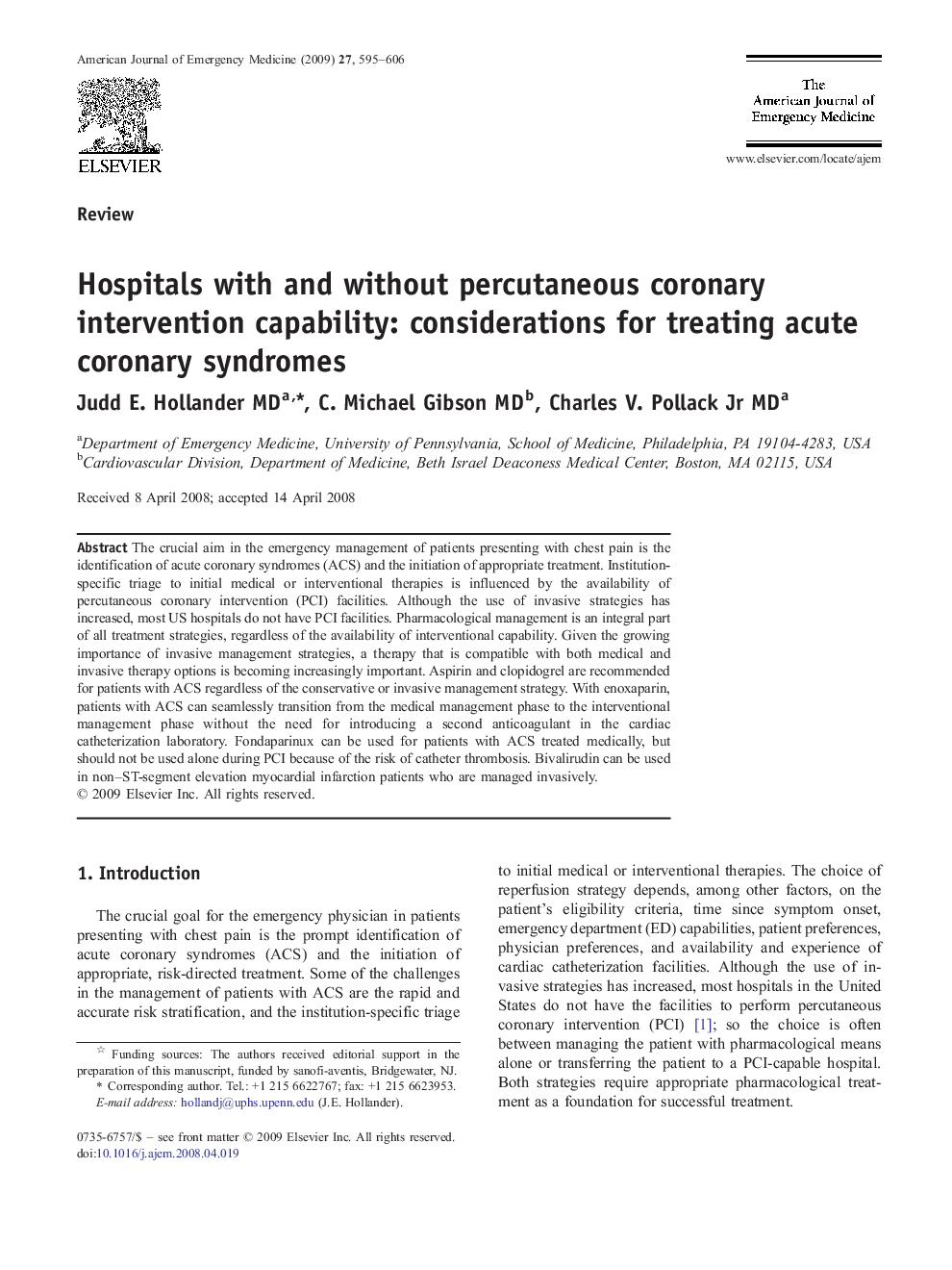| کد مقاله | کد نشریه | سال انتشار | مقاله انگلیسی | نسخه تمام متن |
|---|---|---|---|---|
| 3226978 | 1588166 | 2009 | 12 صفحه PDF | دانلود رایگان |

The crucial aim in the emergency management of patients presenting with chest pain is the identification of acute coronary syndromes (ACS) and the initiation of appropriate treatment. Institution-specific triage to initial medical or interventional therapies is influenced by the availability of percutaneous coronary intervention (PCI) facilities. Although the use of invasive strategies has increased, most US hospitals do not have PCI facilities. Pharmacological management is an integral part of all treatment strategies, regardless of the availability of interventional capability. Given the growing importance of invasive management strategies, a therapy that is compatible with both medical and invasive therapy options is becoming increasingly important. Aspirin and clopidogrel are recommended for patients with ACS regardless of the conservative or invasive management strategy. With enoxaparin, patients with ACS can seamlessly transition from the medical management phase to the interventional management phase without the need for introducing a second anticoagulant in the cardiac catheterization laboratory. Fondaparinux can be used for patients with ACS treated medically, but should not be used alone during PCI because of the risk of catheter thrombosis. Bivalirudin can be used in non–ST-segment elevation myocardial infarction patients who are managed invasively.
Journal: The American Journal of Emergency Medicine - Volume 27, Issue 5, June 2009, Pages 595–606